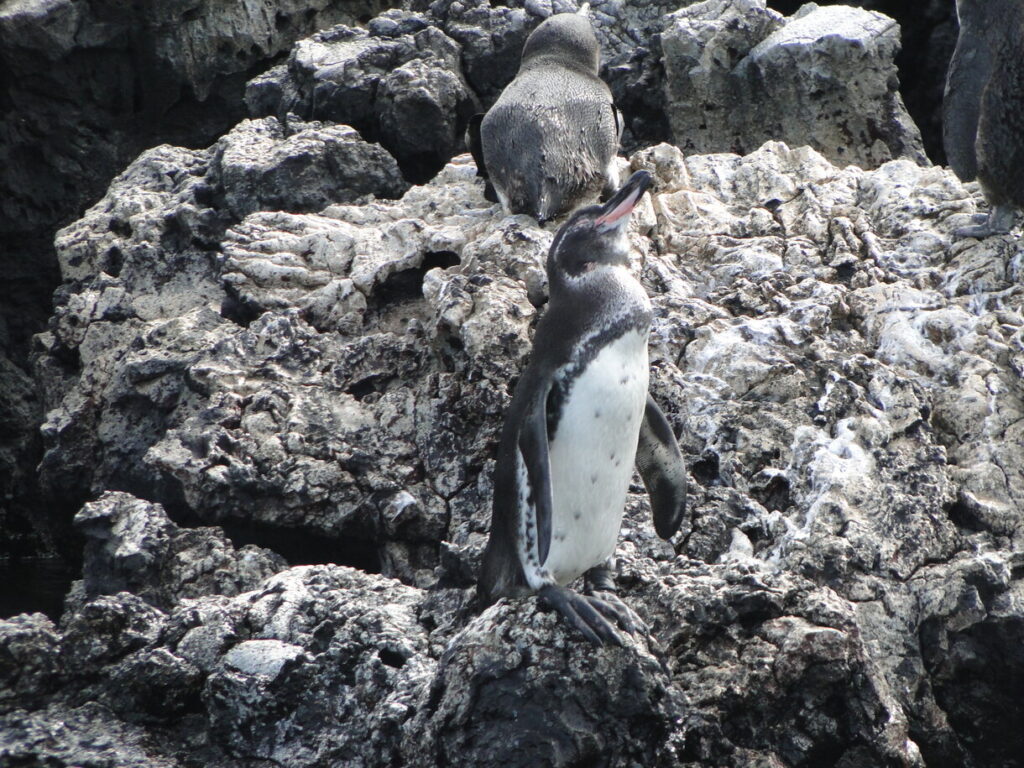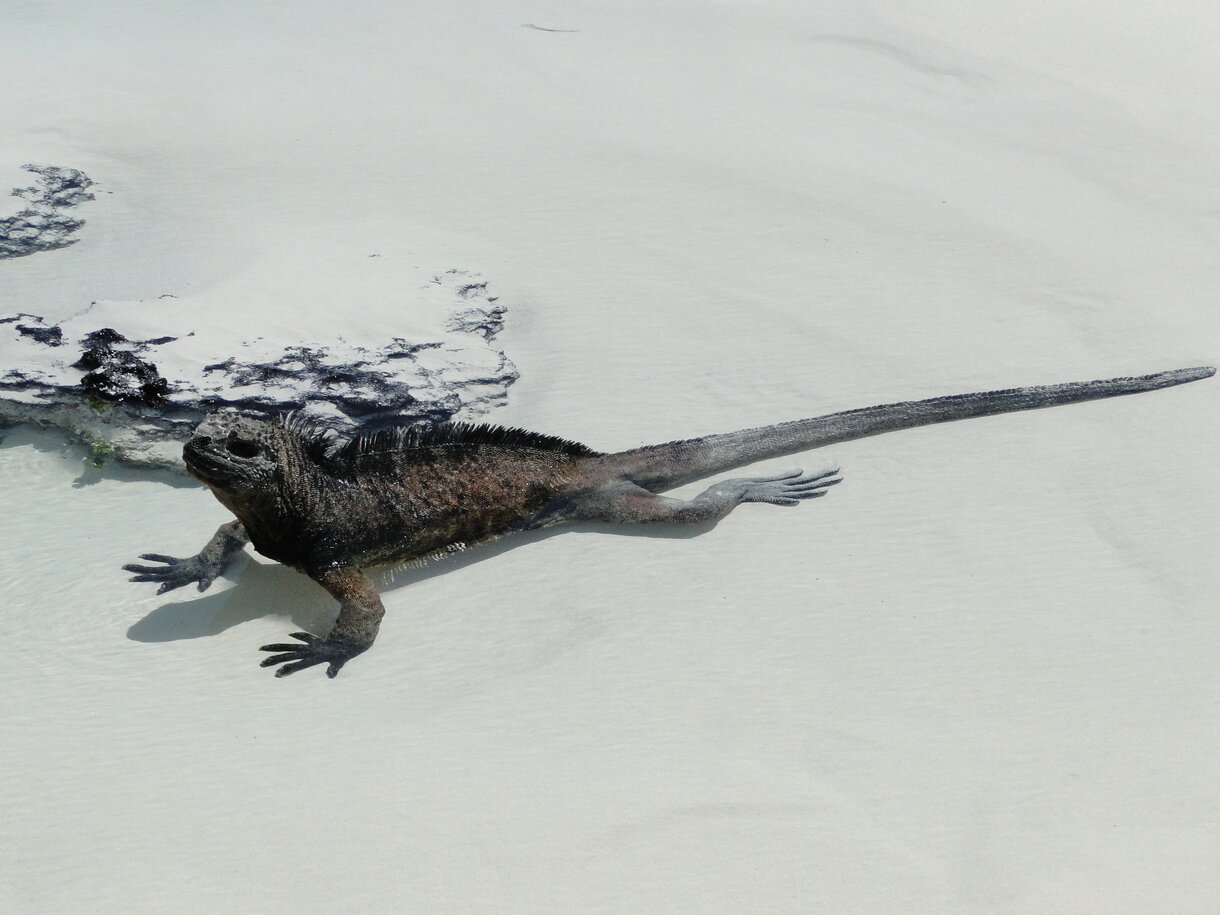Isla Isabela – Galapagos’ Crown Jewel: Between Volcanoes and Paradise Beaches
At dawn, we boarded a ferry ($25-30) to Isla Isabela – the youngest and wildest of Galapagos’ main islands. With only 1-2 daily crossings that fill quickly, advance booking is essential. After several hours, we reached Puerto Villamil – a charming town that became our base, accessible via $1 taxi from the dock.
Historical tidbit: Isla Isabela is the only Galapagos island named for royalty – Queen Isabella I of Castile who funded Columbus’ voyage. Shaped like a seahorse, it formed from six merged volcanoes.
We secured a cozy $20 room with bathroom, then headed to beaches teeming with marine iguanas and sea lions – that signature Galapagos experience where wildlife coexists fearlessly with humans.

Las Tintoreras: Underwater Safari
That afternoon, we visited Las Tintoreras reserve during iguana mating season – males fiercely battling for territory and females. Next came Galapagos icons: comical Galapagos penguins and blue-footed boobies.
The day’s climax? Snorkeling in crystal waters when Monika spotted three reef sharks gliding 2-3 meters beneath us, utterly indifferent to our presence. These magical moments define Galapagos – where animals show no fear of humans.
Sierra Negra Volcano Expedition
At dawn next day, we embarked on a trek to Sierra Negra – one of Isabela’s most active volcanoes. Our adventure began aboard a truck with makeshift benches – standard island transport.

Geological wonder: Sierra Negra’s crater spans 7x9km – the world’s second largest. Its 2018 eruption left some ground hot enough to fry eggs!
Light drizzle became torrential rain. Unprepared for equatorial chill (who knew?), we sported “designer” trash bag ponchos from our guide. Despite weather, the hike fascinated us with insights into unique flora, fauna and volcanic history.
Lava formations around Volcán Chico particularly awed us – raw testaments to nature’s power. Finally, clouds parted to reveal breathtaking panoramas.

Galapagos Highlights: Our Wildlife Encounters
During our stay, we observed:
- Giant tortoises – Earth’s largest land turtles living 150+ years
- Marine iguanas – the only ocean-feeding lizards
- Blue-footed boobies – their mating dance is unforgettable
- Reef sharks – completely harmless to humans
- Galapagos penguins – the only penguins north of the equator
- Sea lions – often found napping on town benches
Isla Isabela became our Galapagos highlight. Despite high costs (it’s Ecuador’s priciest destination), these islands remain essential for nature lovers. Budget at least 3 days to explore this magical place where evolution charted its own unique course.

Practical tips:
- Book ferries early – seats disappear fast
- Pack rain jackets for hikes – mountain weather changes rapidly
- Don’t miss snorkeling at Los Túneles – top marine life spotting
- Try local ceviche – a seafood specialty

Leave a Reply